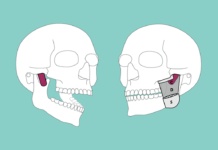Are you in need of CE credits? If so, check out our peer-reviewed, self-study CE courses here.
Test Your Oral Manifestations of Substance Abuse Disorders Knowledge
1. Severe caries that resemble early childhood caries, xerostomia, and missing or fractured teeth may indicate cannabis abuse.
Severe caries that resemble early childhood caries, xerostomia, and missing or fractured teeth may indicate methamphetamine abuse. The pattern of decay associated with methamphetamine abuse is often distinct on the buccal smooth surface at the cementoenamel junction of posterior teeth and the interproximal surfaces of anterior teeth.
Missing or fractured teeth, periodontal disease, and severe xerostomia are other possible clinical indicators of methamphetamine abuse. Xerostomia may further contribute to infections such as candidiasis, glossitis, cheilitis, and gingival inflammation.
Department of Scientific Information, Evidence Synthesis & Translation Research, ADA Science & Research Institute, LLC. (2023, July 12). Methamphetamine. American Dental Association. https://www.ada.org/en/resources/research/science-and-research-institute/oral-health-topics/methamphetamine
2. Cannabis use may contribute to an increased risk of oral candidiasis due to the immunosuppressive effects of cannabis.
Cannabis has an immunosuppressive effect that may contribute to a higher prevalence of oral candidiasis compared to non-users. It has been suggested that the hydrocarbons present in cannabis may be an energy source for C. albicans, which could result in the increased presence and density of colonies. Additionally, if a user of cannabis has poor oral hygiene, this may promote C. albicans colonization.
Department of Scientific Information, Evidence Synthesis & Translation Research, ADA Science & Research Institute, LLC. (2023, October 26). Cannabis: Oral Health Effects. American Dental Association. https://www.ada.org/en/resources/research/science-and-research-institute/oral-health-topics/cannabis-oral-health-effects
3. Which substances have been associated with burning mouth syndrome?
The use of opioids, such as heroin, is associated with an increased incidence of tooth loss, generalized caries, especially on smooth and cervical surfaces, and salivary hypofunction. Xerostomia caused by salivary hypofunction may lead to burning mouth syndrome, taste impairment, eating difficulties, mucosal infections, and periodontal disease.
Shekarchizadeh, H., Khami, M.R., Mohebbi, S.Z., et al. Oral Health of Drug Abusers: A Review of Health Effects and Care. Iranian Journal of Public Health. 2013; 42(9): 929-940. https://www.ncbi.nlm.nih.gov/pmc/articles/PMC4453891/
4. Nicotine use is associated with an increased risk of developing necrotizing gingivitis. There is no increased risk of developing necrotizing gingivitis with alcohol abuse.
Nicotine use is associated with an increased risk of developing necrotizing gingivitis. The risk is related to the amount of nicotine consumed per day. “The influence of smoking on the host immune response has revealed that nicotine impairs neutrophil bactericidal activity against oral pathogens by inhibiting the production of superoxides and hydrogen peroxide, which are responsible for bacterial death.”
Oral manifestations of nicotine use include, but are not limited to, an increased risk of developing:
- Periodontitis
- Leukoplakia
- Leukoedema
- Necrotizing gingivitis
- Oral cancer
Alcohol abuse is associated with an increased risk of developing necrotizing gingivitis. Neglected oral hygiene that may occur due to alcohol abuse may lead to the formation of periodontopathogenic biofilm, which exacerbates the inflammatory response and increases cytokines. Alcohol intake can also cause changes in saliva and decrease salivary flow, making oral tissues more susceptible to periodontal diseases and caries.
Oral manifestations of alcohol abuse include, but are not limited to, an increased risk of developing:
- Dental caries
- Necrotizing gingivitis
- Periodontitis
- Gingival recession
- Xerostomia
Valadas, L.A., Fernandes, M.L., Silva, M.I., et al. Oral Manifestations of Drug Abuse: A Review of Literature. Journal of Young Pharmacists. 2020; 12(1): 483-486. https://www.researchgate.net/publication/339736986_Oral_Manifestations_of_Drug_Abuse_A_Review_of_Literature
5. Which of the following substances are associated with an increased incidence of bruxism that could lead to TMJ disorders?
Cocaine, heroin, and methamphetamines are all associated with an increased incidence of bruxism that may lead to myofascial pain, TMJ disorders, and trismus. Attrition and abfraction lesions attributed to bruxism may also be present.1,2
1. Teoh, L., Moses, G., McCullough, M.J. Oral Manifestations of Illicit Drug Use. Australian Dental Journal. 2019; 64(3): 213-222. https://doi.org/10.1111/adj.12709
2. Department of Scientific Information, Evidence Synthesis & Translation Research, ADA Science & Research Institute, LLC. (2023, July 12). Methamphetamine. American Dental Association. https://www.ada.org/en/resources/research/science-and-research-institute/oral-health-topics/methamphetamine
Before you leave, check out the Today’s RDH self-study CE courses. All courses are peer-reviewed and non-sponsored to focus solely on high-quality education. Click here now.











